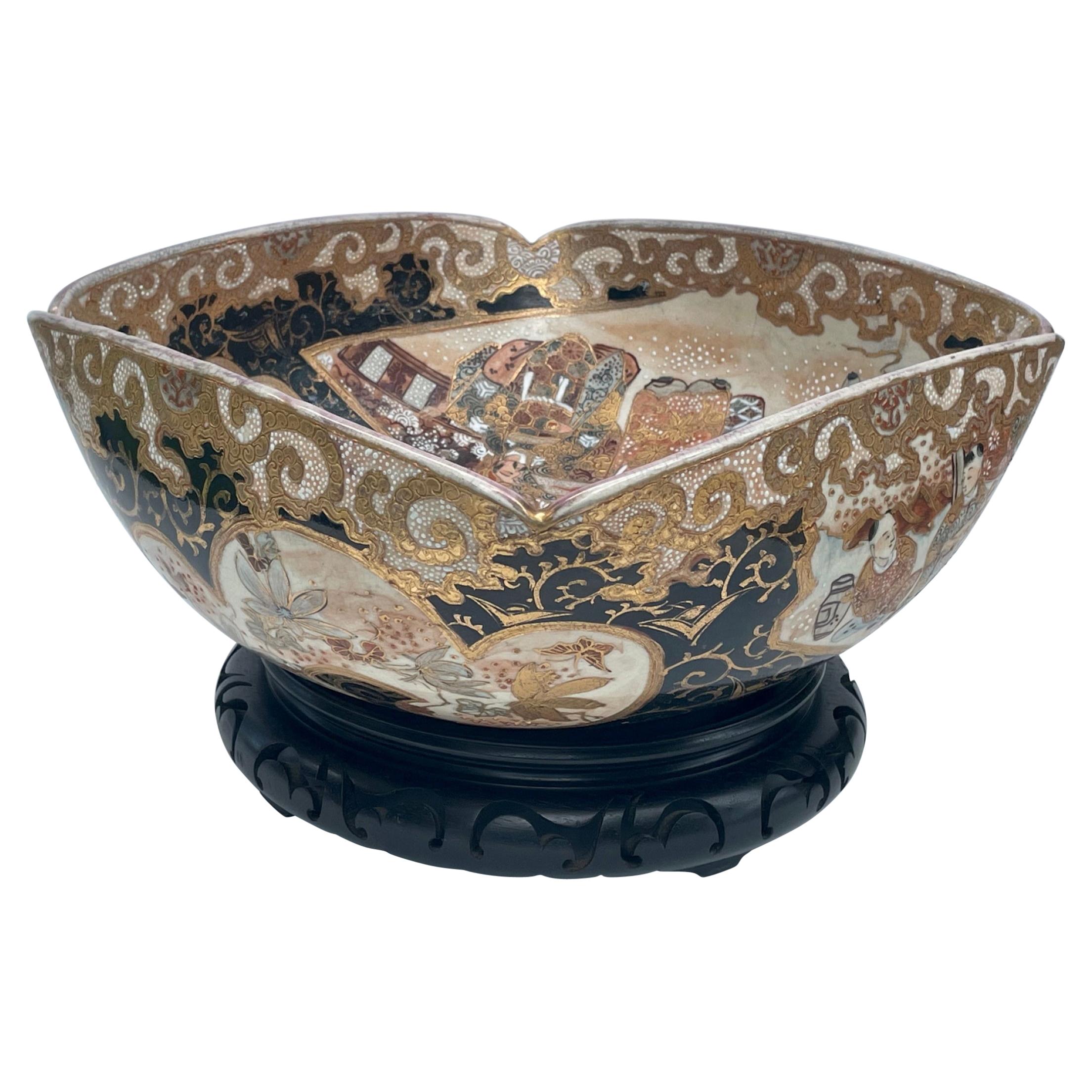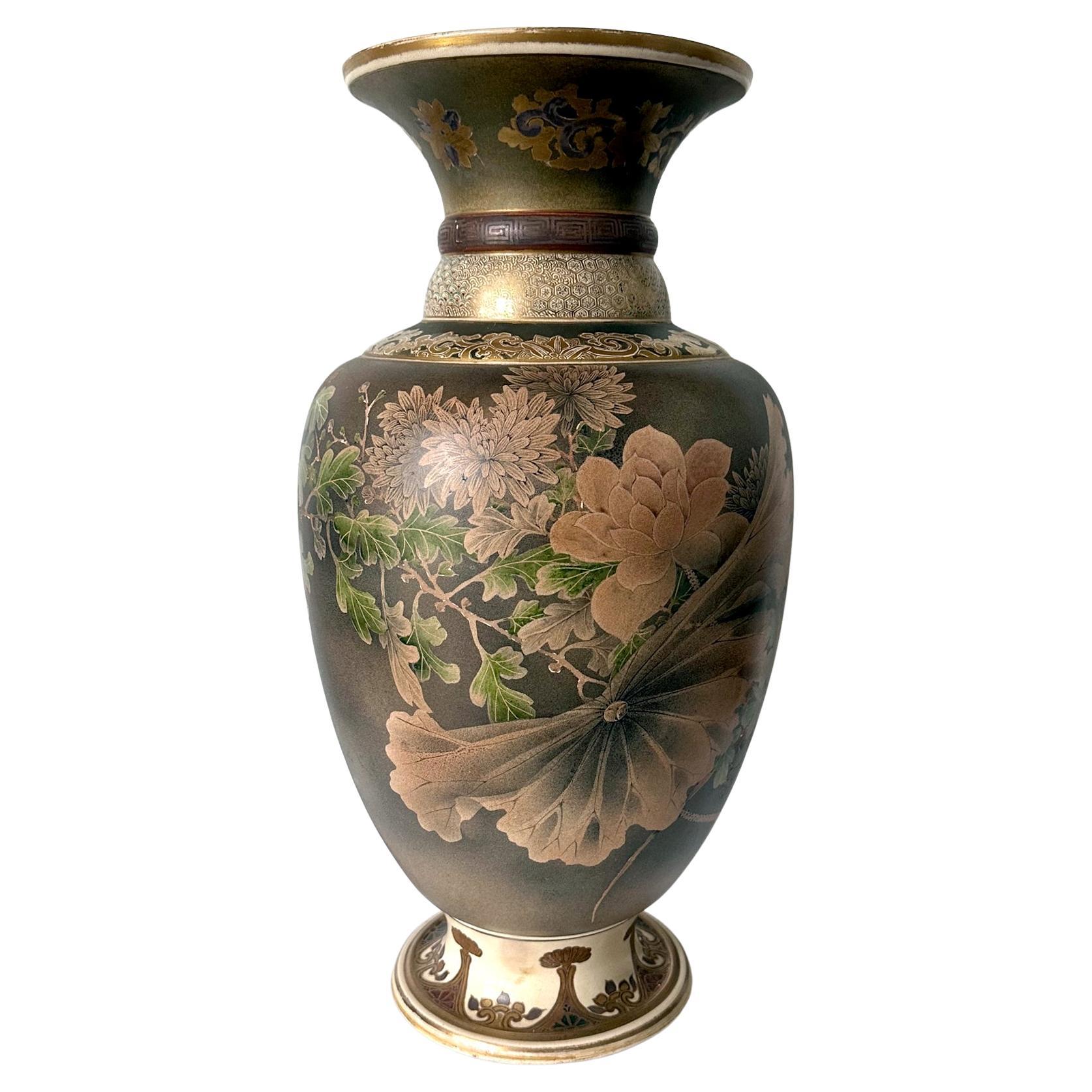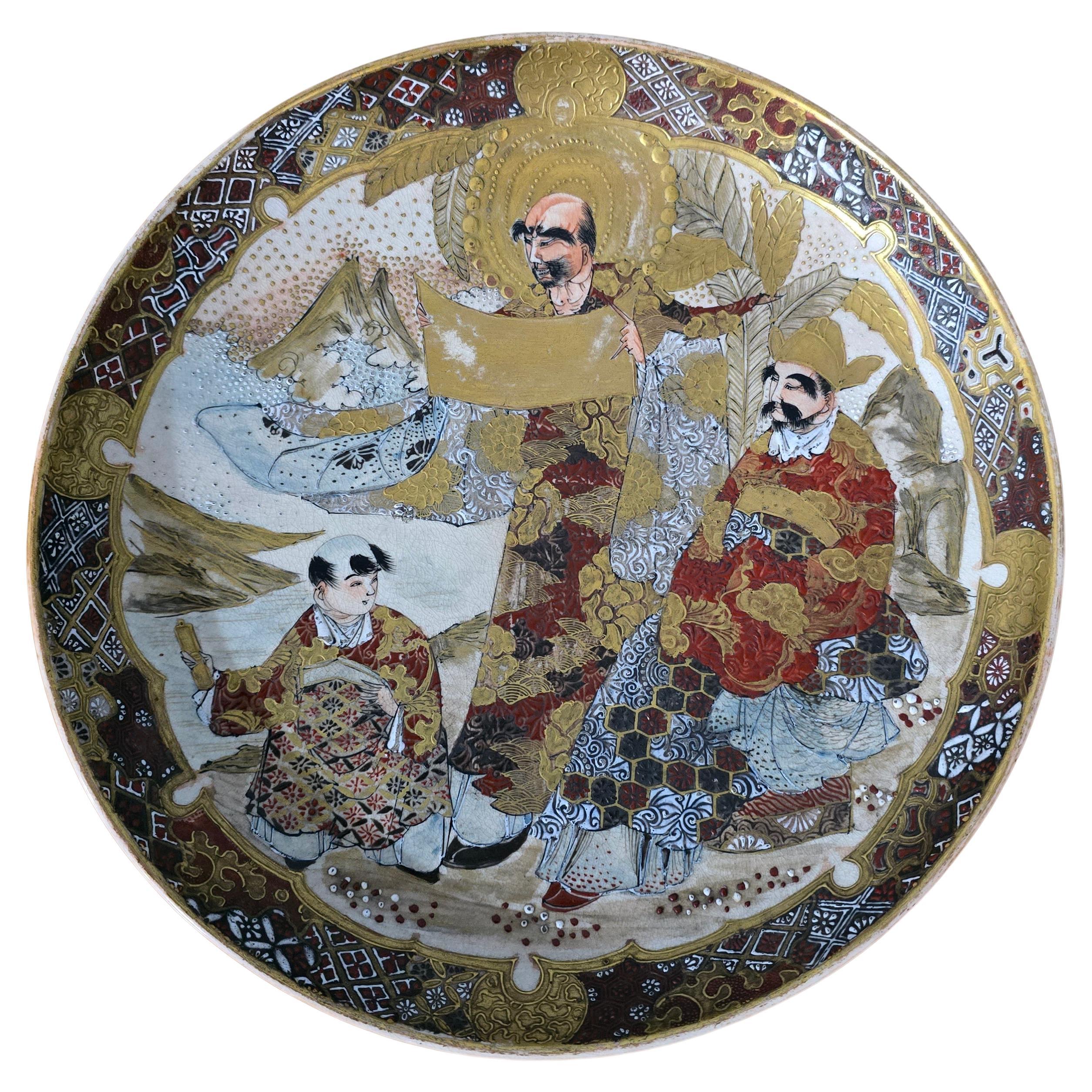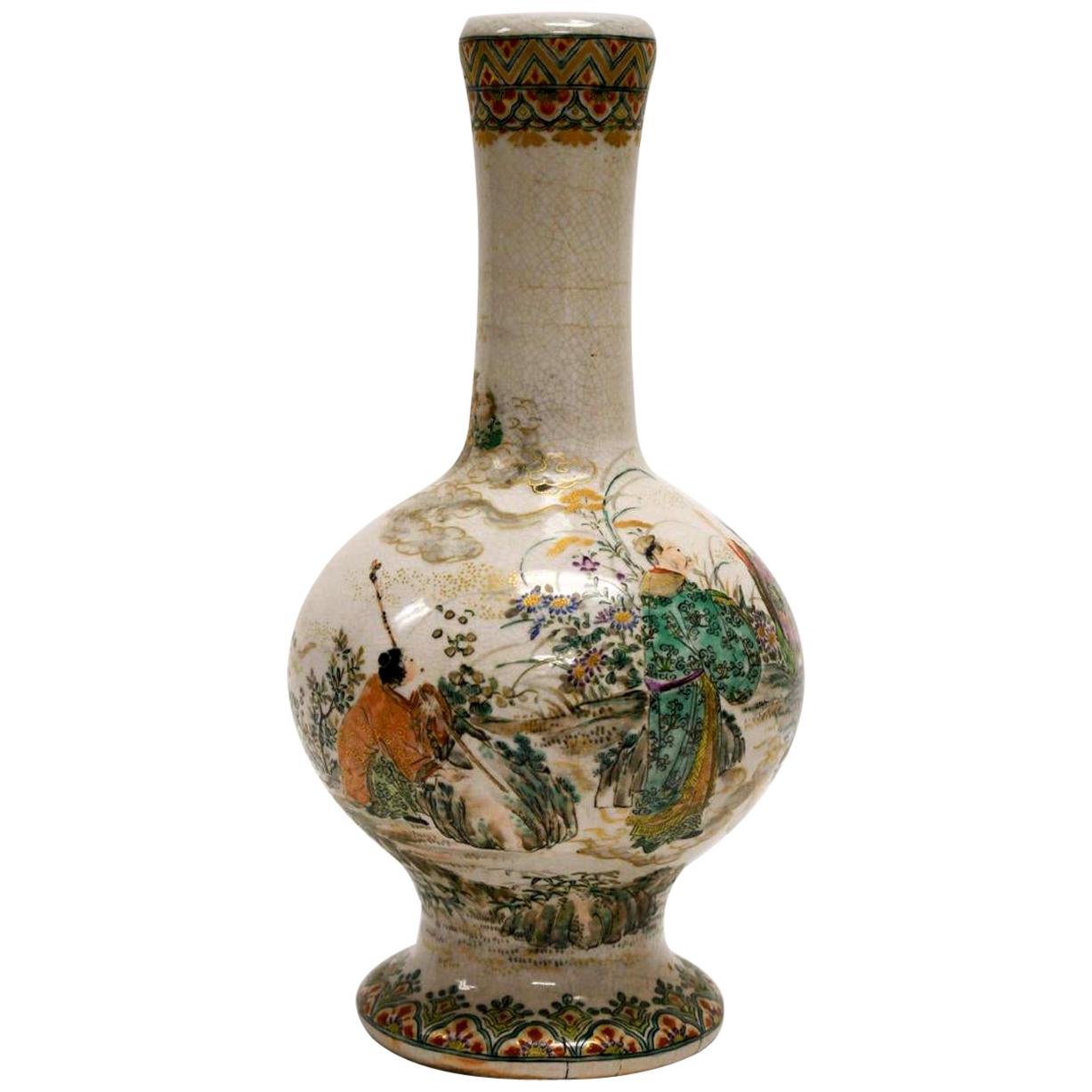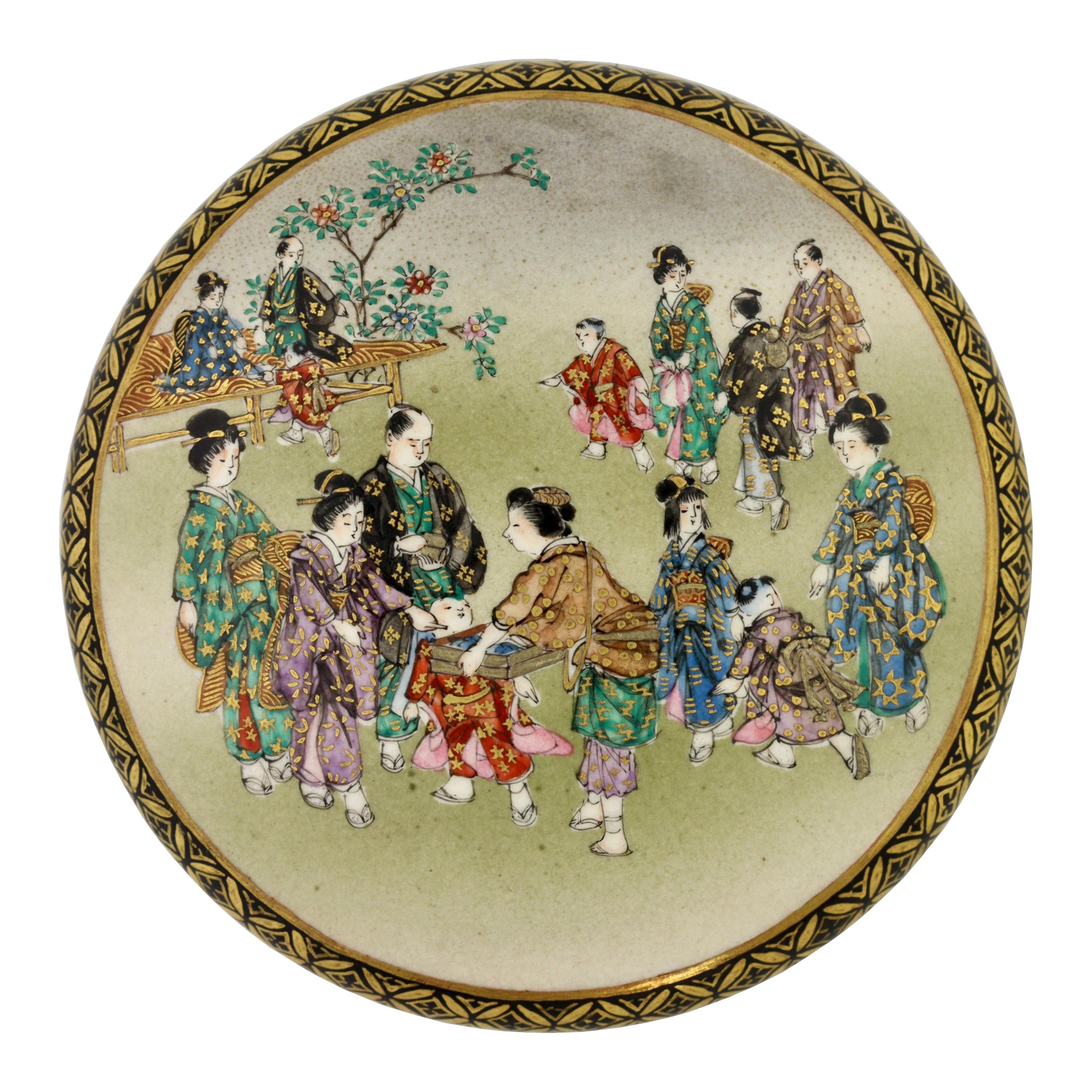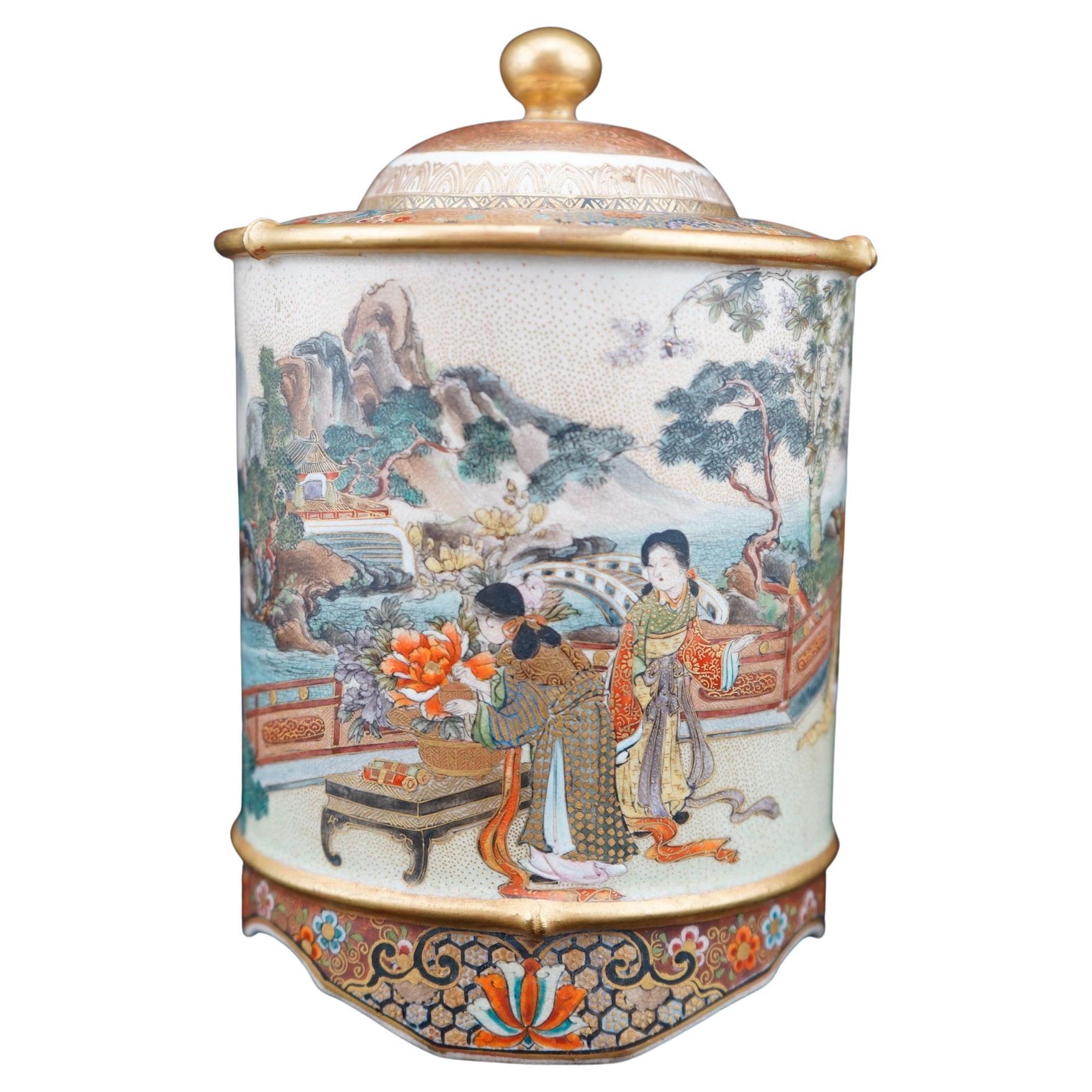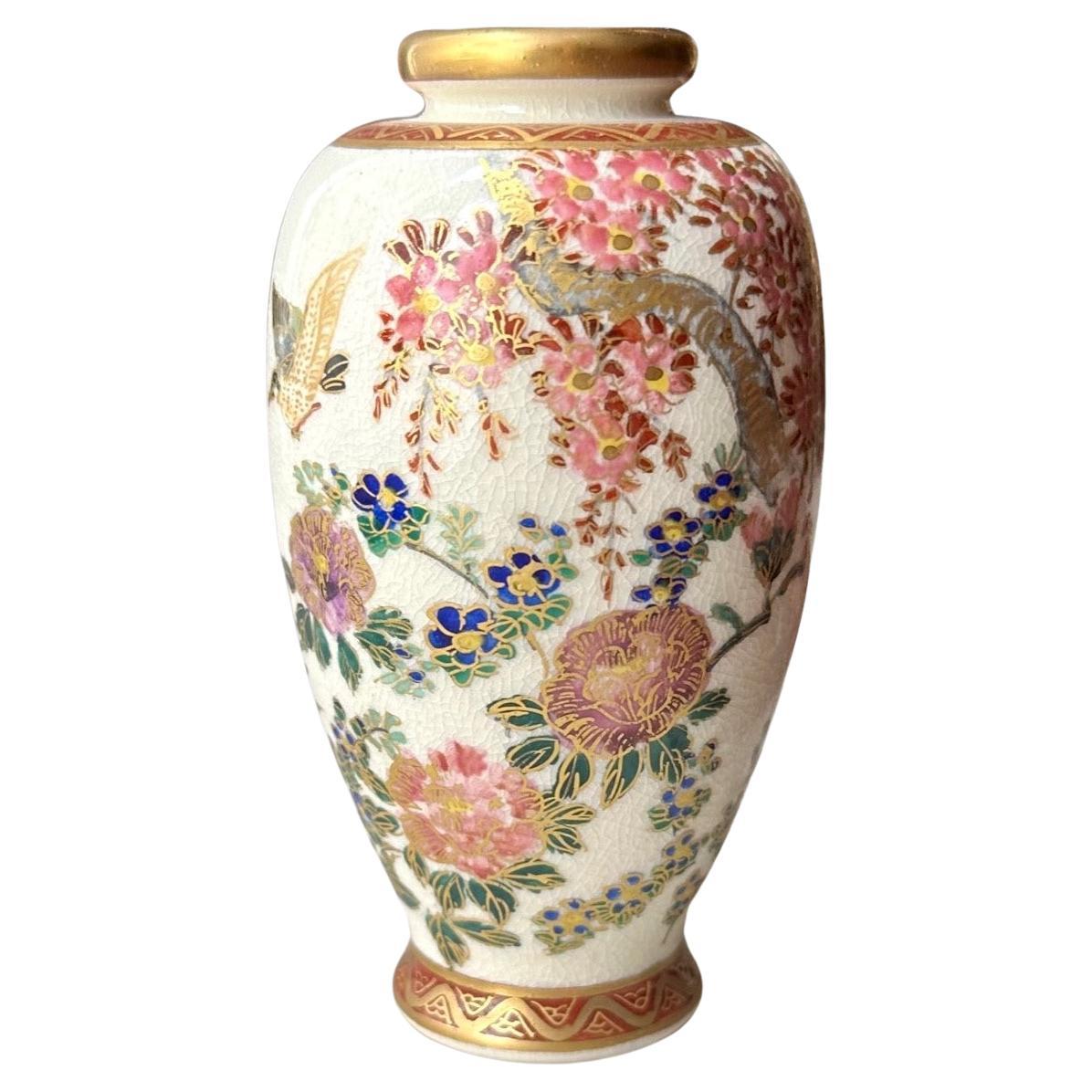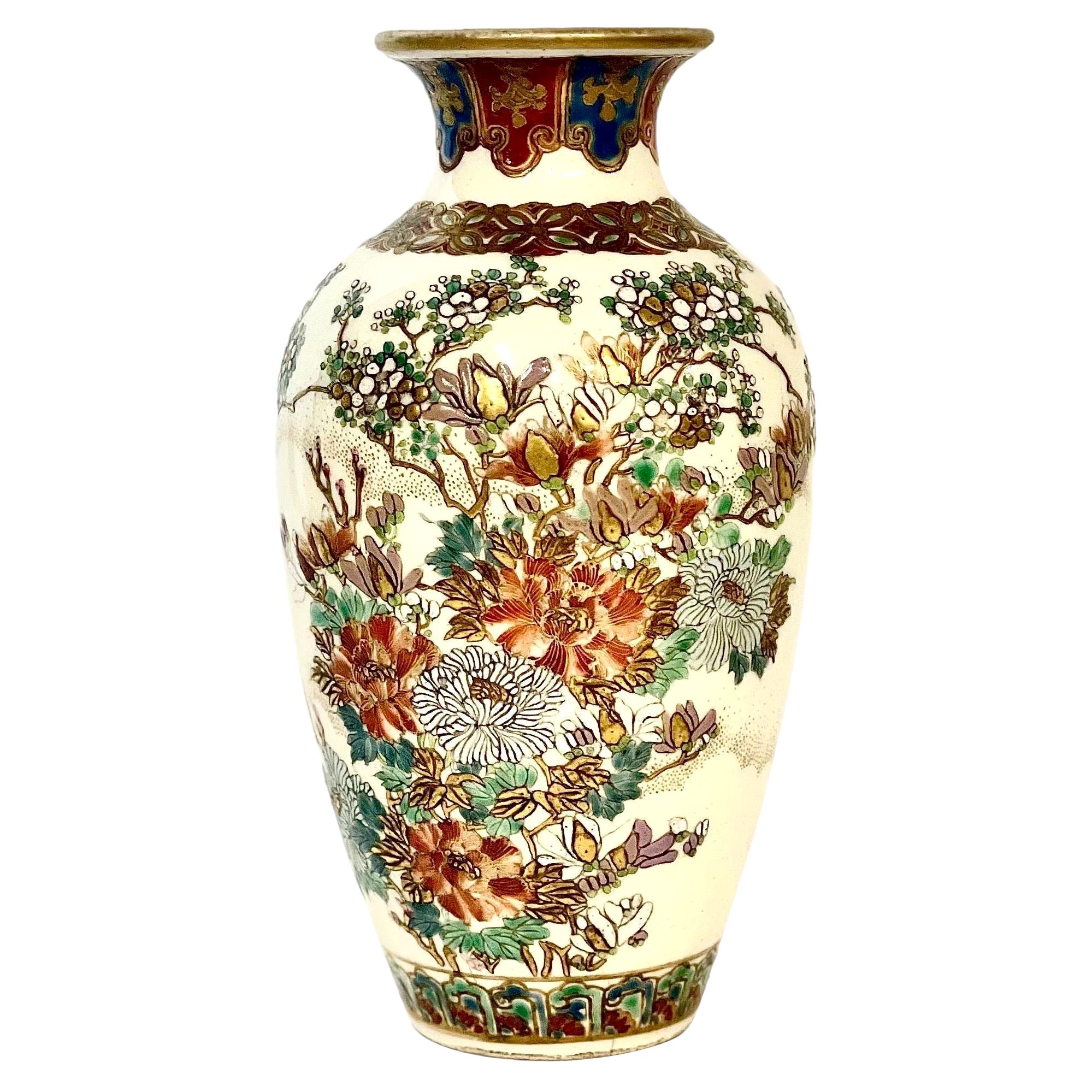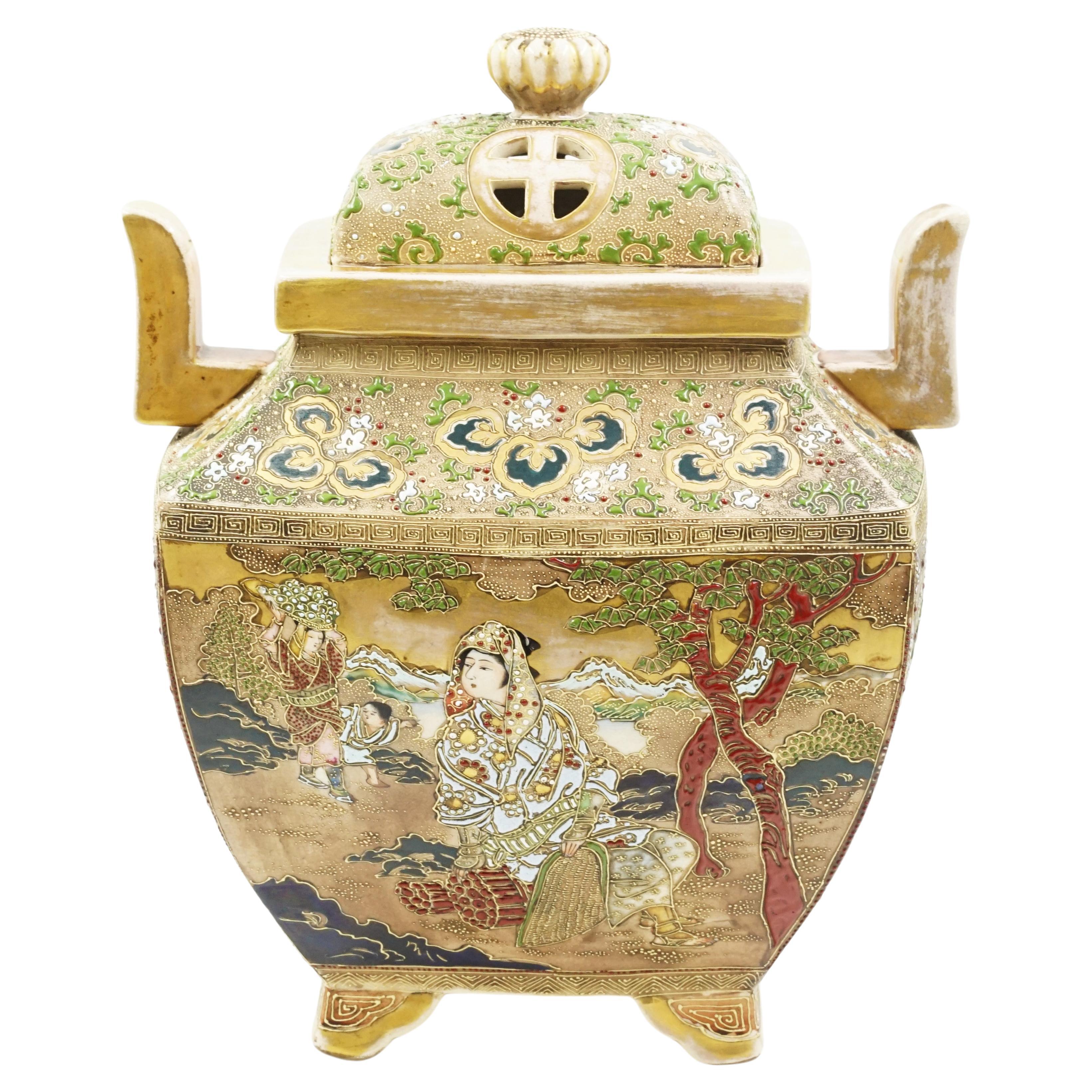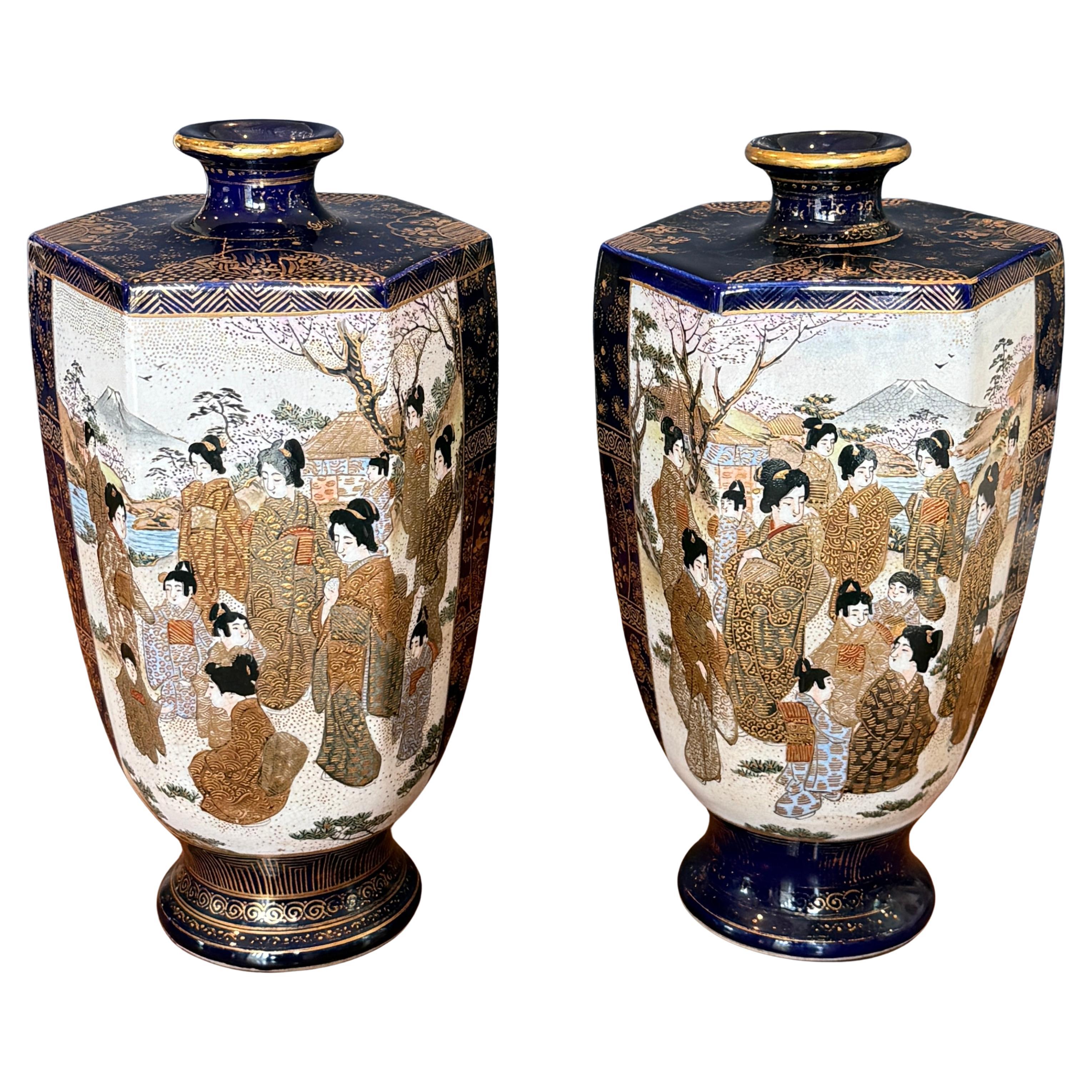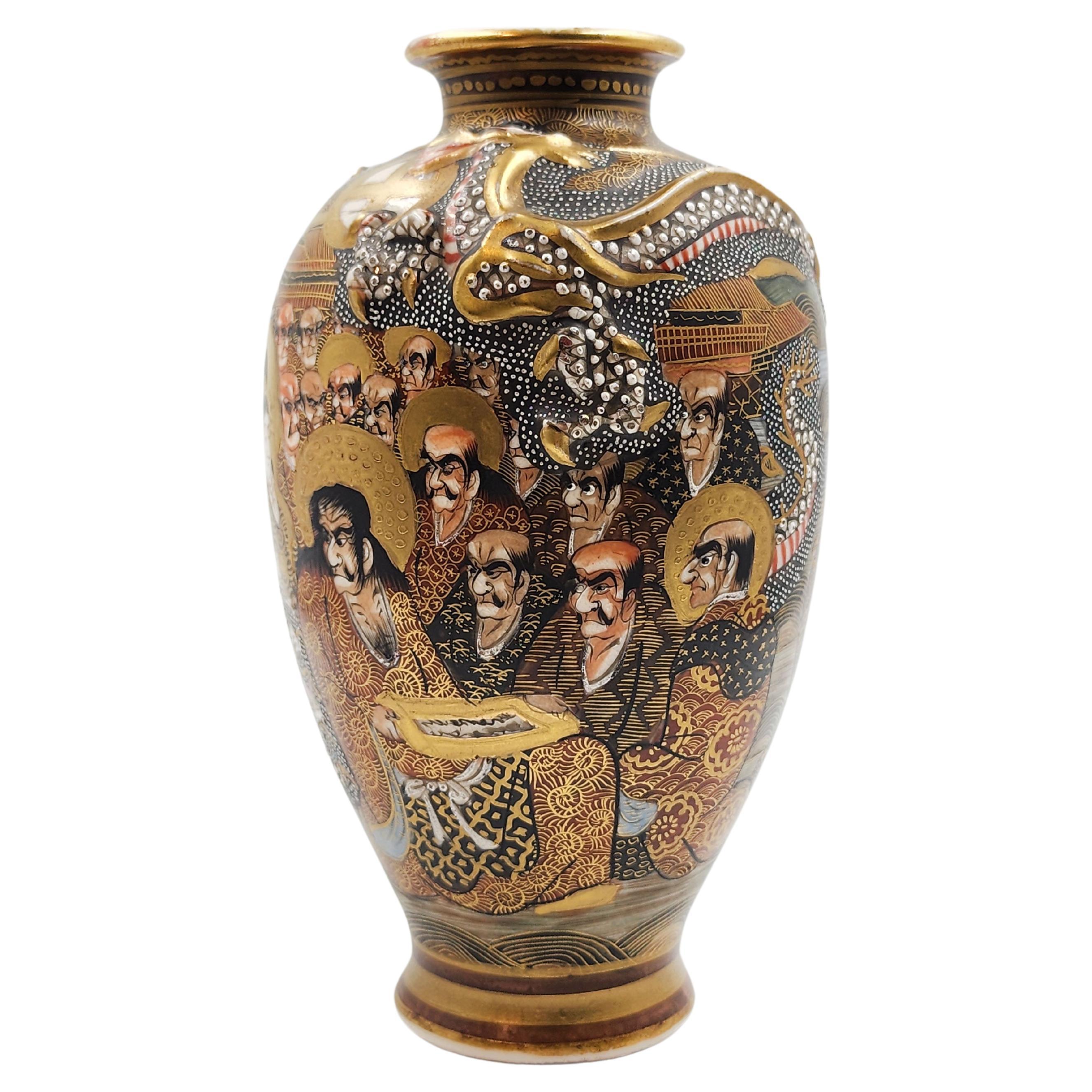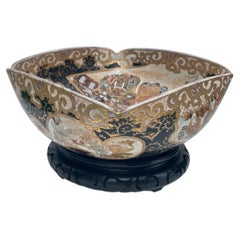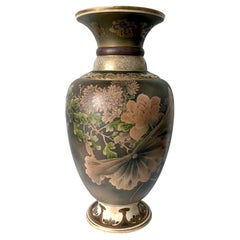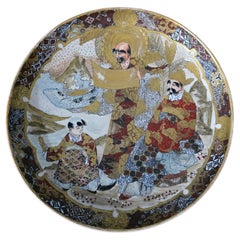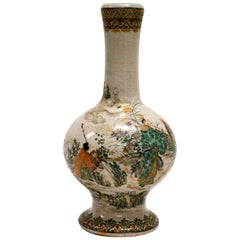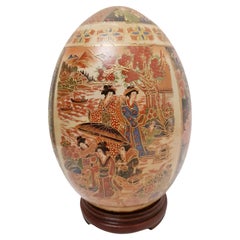
Vitange Satsuma Japonese large Ceramic Egg
View Similar Items
Video Loading
1 of 10
Vitange Satsuma Japonese large Ceramic Egg
$899List Price
About the Item
- Attributed to:Satsuma (Author)
- Dimensions:Height: 9.06 in (23 cm)Width: 5.52 in (14 cm)Depth: 4.34 in (11 cm)
- Style:Arts and Crafts (In the Style Of)
- Materials and Techniques:Ceramic,Other
- Place of Origin:
- Period:
- Date of Manufacture:1960
- Condition:
- Seller Location:Grantham, GB
- Reference Number:1stDibs: LU5865225801952
Authenticity Guarantee
In the unlikely event there’s an issue with an item’s authenticity, contact us within 1 year for a full refund. DetailsMoney-Back Guarantee
If your item is not as described, is damaged in transit, or does not arrive, contact us within 7 days for a full refund. Details24-Hour Cancellation
You have a 24-hour grace period in which to reconsider your purchase, with no questions asked.Vetted Professional Sellers
Our world-class sellers must adhere to strict standards for service and quality, maintaining the integrity of our listings.Price-Match Guarantee
If you find that a seller listed the same item for a lower price elsewhere, we’ll match it.Trusted Global Delivery
Our best-in-class carrier network provides specialized shipping options worldwide, including custom delivery.You May Also Like
Japanese Meiji Period Satsuma Large Square Bowl Centerpiece
By Satsuma
Located in Vero Beach, FL
Japanese Meiji Period Satsuma large square bowl
Antique early Meiji Period 15" square with scalloped rim Satsuma bowl. Highly unusual and finely painted. ...
Category
Antique 19th Century Japanese Meiji Ceramics
Materials
Ceramic
$4,160 Sale Price
20% Off
Large Japanese Satsuma Ceramic Vase Kinkozan
By Kinkozan
Located in Atlanta, GA
A large Japanese ceramic vase from the end of Meiji period circa 1890-1910s by Kinkozan (1645-1927). One of the largest studio manufacturers of the export ceramics at the time based in Kyoto. In the typical style of satsuma made at the turn of 20th century, the vase is elaborately decorated with a rather unusual kinran-de (gold paint) and green enamel highlight on a mottled brown background. The painterly decoration depicts a large seasonal floral arrangement in a circular fashion. Besides the obviously superb craftsmanship, what sets this particular vase apart from many lower quality and mass-produced pieces is its tone-on-tone color pallet that is visually somber and the small and sensitive details that heralds the change of the seasons. When the viewer goes beyond the first casual glimpse of the blossom and foliage, one would notice that on the edges of certain leaves as well as along the stalks, there accumulates a very thin layer of the white dust that represents the frost. The flower in bloom are chrysanthemums. Despite of being splendid, they are the messengers of the autumn. The large lotus leaf was subtly rendered in a bended and slightly withered manner, just past its prime. Although the lotus is still in bloom, the prominent seed pod indicates it may be the last for the season. The sentimental capture of the change of the seasons is not unusual in Japanese art. This vase poetically represents such a subtle transition from summer to fall, perhaps depicting the very first frost.
The neck of the vase is also slightly unusual with two rolled rings...
Category
Early 20th Century Japanese Meiji Ceramics
Materials
Ceramic
Excellent Satsuma Charger
By Satsuma
Located in Swadlincote, GB
A super quality Satsuma bowl, in overall excellent condtion.
Satsuma china, or Satsuma ware, originates from the Satsuma Province in southern Kyūshū, Jap...
Category
Antique 19th Century Japanese Japonisme Ceramics
Materials
Ceramic
Early Japanese Satsuma Antique Vase
By Satsuma
Located in Atlanta, GA
An Satsuma ceramic stone ware vase, circa 19th century, around the end of the Edo and the beginning of Meiji period. In the form of a Classic garlic bottle whose prototype was from China, the white bodied piece is decorated with an early form of kin nishikide, the so called golden brocade, a palette of iron-red, blue, green, yellow, purple and black with golden highlight. The over glazed enamel paint shows a group of robed figures in a garden setting with a lion and three tigers. A transparent overall glaze shows very fine crackles. The design is relatively sparse with plenty of negative space in contrast to the Satsuma production from the late 19th century, when the trend became fussy and overly glitz, due to the influence by the perceived western taste for the export market. This piece may still be made for export but its pattern was more influenced by both Kyoto Pottery and the Kano school of painting compared to the export ware by the end of the 19th century onward to the early 20th century. It was believed by many that this was a result of Satsuma potters visiting Kyoto in the late seventeenth century to learn over glaze painting techniques.
There are some age glaze crackles especially around the foot. The piece is not signed in keeping with the earlier production before Satsuma ceramics...
Category
Antique Mid-19th Century Japanese Japonisme Ceramics
Materials
Ceramic
$2,850 Sale Price
25% Off
Satsuma Earthenware Covered Box, by Kinkozan
By Satsuma
Located in West Palm Beach, FL
A Satsuma Earthenware covered box,
by Kinkozan,
Japanese, Meiji period (1868-1912)
decorated in polychrome enamels and gilt over a clear, crackled glaze, delicately painted with s...
Category
Antique Early 1900s Ceramics
Materials
Earthenware
Japanese Meiji Satsuma Covered Scenic Jar
By Satsuma
Located in Sarasota, FL
Japanese Meiji satsuma covered scenic jar. Very detailed hand gilding and hand decoration. Maker's mark present on the bottom .
Category
Antique Late 19th Century Japanese Meiji Ceramics
Materials
Ceramic, Pottery
Recently Viewed
View AllMore Ways To Browse
Satsuma Egg
Japanese Satsuma Egg
Japanese Peony
Underglaze Blue Japanese Porcelain
Antique Chinese Furniture New York
Chinese Antique Green Glaze Ceramics
17th Century Japanese Art
19th Century Chinese Famille Rose
Imari Meiji Vase
Japanese Meiji Plates
Meiji Blue And White
Asian Fans
Chinese Canton Porcelain
Kangxi Ceramics
Painted Japanese Bowl
Ming Blue White
Japanese Arita Blue And White
Japanese Kutani
